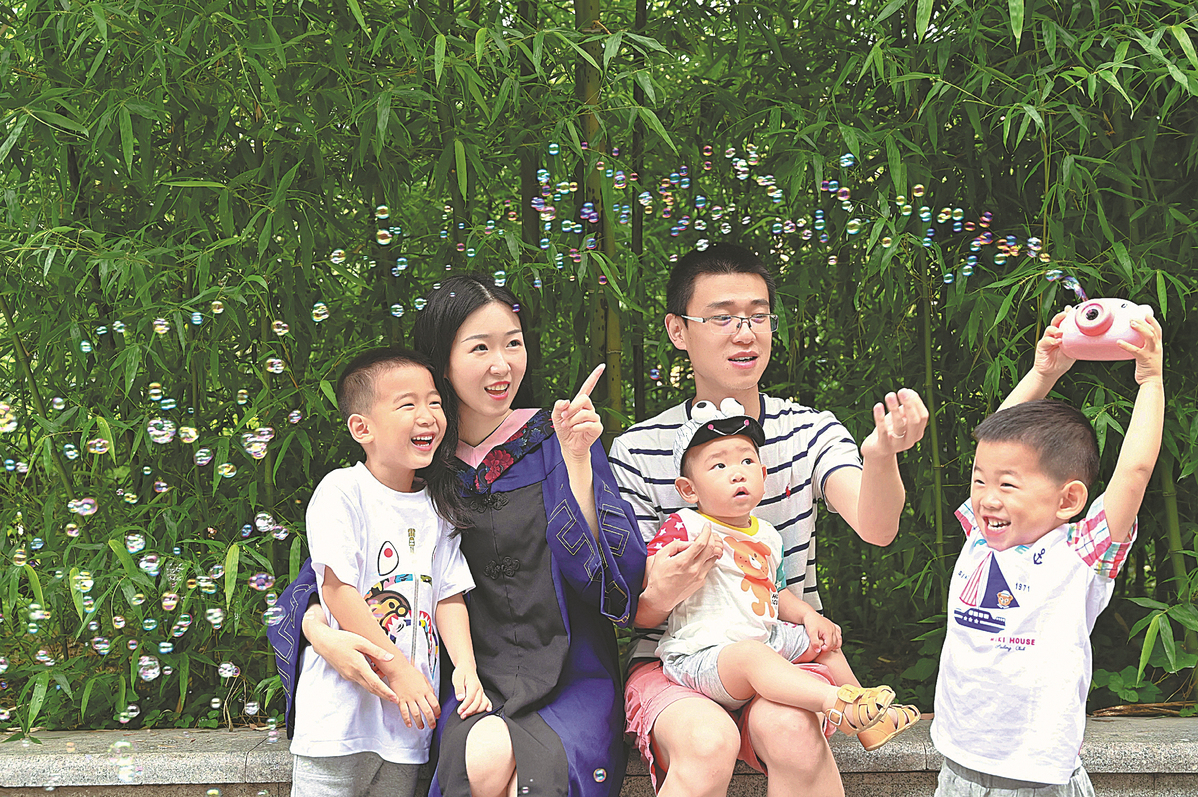Increase seen in births of second, third children

A family pose for a photo at the Central University of Finance and Economics in Beijing. [Photo provided to China Daily]
Healthcare infrastructure improves with more hospital beds, care centers
Babies born as the second or third child in a family accounted for about 54 percent of new births in China last year, the National Health Commission said on Thursday.
Statistics showed that babies born as the second child accounted for about 39 percent of new births last year, compared with 41.1 percent in 2021. The percentage of babies born as the third child rose slightly by 0.5 percentage points year-on-year to 15 percent last year.
In 2013, families were allowed to have two children if either of the parents was an only child, and in 2015 all couples were allowed to have two children. In May 2021, all families were allowed to have up to three children.
The policy adjustment has seen the ratio of children born as the second or third child rising gradually, from around 30 percent in 2013 to around 50 percent in recent years, according to the commission.
However, the total number of new births has kept falling in the country at the same time. Last year, there were 9.56 million newborns nationwide, down from 10.62 million in 2021. This is the first time the number has dipped below 10 million since the late 1940s.
The continuously falling number of newborns over the years is seen as a major driver behind the historic fall in the country's total population recorded last year. China's total population dropped by 850,000 in 2022.
The statistics showed that the gender ratio at birth last year was 111.1 boys for every 100 girls, compared with 118 in 2013.
As part of the efforts to boost births, the number of nursery care facilities increased to nearly 76,000 last year, with 2.57 nursery care slots per 1,000 people.
The statistics also showed that China's healthcare capacity has been improving in recent years.
By the end of last year, the total number of hospital beds stood at 9.75 million, a year-on-year increase of 300,000. The number of hospital beds per 1,000 people also rose to 6.92 last year.
The number of physicians per 1,000 people and that of nurses also increased slightly compared with the previous year.
Notably, healthcare infrastructure also expanded, with a total of 36,448 community health service centers and stations established throughout the nation.
Photos
Related Stories
- China's populous Guangdong issues more favorable housing polices to support multi-child families
- Interview: China's population fully capable of supporting modernization drive: official
- Cities in China implement subsidy policy to support childbirth
- At least 14 provincial-level regions in China record increasing population in 2022 despite nationwide declining trend: data
- China pursues high-quality population development to support modernization
- China moves to improve basic elderly care as population ages
Copyright © 2023 People's Daily Online. All Rights Reserved.









